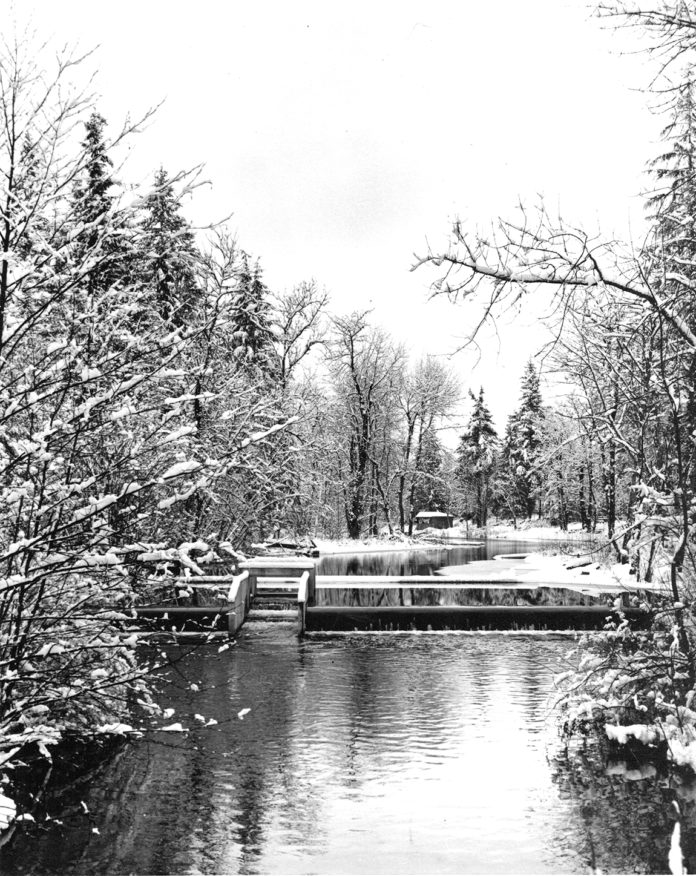This serene photo of the Lake Sawyer dam was taken by Frank Guidetti in January 1956. Also known as the outlet weir, this 94’ wide, 4’ high structure grew out of a lawsuit filed against Charles O’Connell, John D. Nelson and others by Mary F. Burnett, Perry B. Love, et. al. At the time, Vern Cole Realty Co. undertook ambitious plans to deepen a low-lying area, sometimes used agriculturally, located in the far northwest corner of the lake. It is now commonly known as the “boot.” A collection of logs and debris obstructed the boot’s entrance. Though it periodically flooded there was no navigable connection to the lake. In 1939, the surrounding property had been subdivided into the North Shore plat of 139 lots and public park by Rufus Smith and L.G. Olson, descendants of the pioneering Hanson family. Their grandparents, Carl and Anna Hanson built Lake Sawyer’s first cabin on a 160-acre homestead land grant. But for plans to succeed, Cole and company first needed to remove the natural barrier of logs and debris which clogged the channel leaving the lake. Flow from that channel becomes Covington Creek. Cole’s removal of that ancient barrier lowered the lake temporarily which in turn allowed the boot to be dredged and connected to the lake. The clearing and dredging of the Covington Creek channel in turn facilitated development of the Lochow and Gordon families’ West Shore plat of 1950, where canal-front lots were anticipated.
In the 1952 trial, the King County Superior Court found that Lake Sawyer residents and property owners had been “subjected to severe damage and expense during past flood seasons, and that said Lake constitutes a flood control problem.” The Court further decreed that in order to protect abutting properties the maximum lake level would be set at 518.94 feet above mean sea level, that elevation being 16” higher than the reported level on May 19, 1952. The new dam was to be constructed by Vern Cole Realty pursuant to plans approved by the Dept. of Fisheries including a fish ladder and outlet weir. For decades the dam was maintained by an adjacent lot owner, Harold Sovie who died in 1993. The City of Black Diamond annexed the Lake Sawyer area in 1998. Yet, 67 years after the dam’s original construction there’s still confusion surrounding who actually owns the dam or has responsibility for its maintenance. This image comes courtesy of JoAnne Matsumura, an Issaquah historian who received it from the late Albert Guidetti, son of Frank Guidetti.








